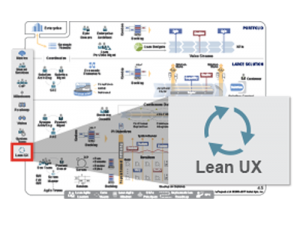
Lean UX and the SAFe Program Increment Life Cycle
Hi Folks,
Most of you know that the integration of Lean UX thinking  was one of the major themes in SAFe 4.5.
was one of the major themes in SAFe 4.5.
Lean UX is fundamentally different than traditional UX approaches. Specifically, there are two major differences;
- Lean UX is hypothesis-driven. Teams implement functionality in minimum viable increments, determining success by measuring results against a pre-stated benefit hypothesis. That hypothesis is tested early in the process through collaborative design and implementation.
- LeanUX is a team sport. Lean UX experts function as part of an Agile team, rather than an independent function. Pixel perfect designs are not required up front, a way to test the hypothesis is.
Our newest contributor, Natalie Warnert, has substantial experience in integrating Lean UX into SAFe at truly enterprise scale. In this Advanced Topic article, Lean UX and the SAFe Program Increment Life Cycle Natalie provide great guidance on the ‘how” of implementing Lean UX. She also introduces YAA (yet another acronym) for LUXCE. Can you guess what that is?
Natalie provides some specific and actionable guidance on how to integrate Lean UX thinking and Lean UX specialists with the cross-functional Agile teams that are responsible for evaluating the feature hypothesis through actionable code. Moreover, by applying the SAFe principle #9 Decentralizing decision-making, she describes how to approach this at the ART, Value Stream, and portfolio levels.
For more, please read the article.
Thanks Natalie. Very helpful!
Stay SAFe!
—Dean





